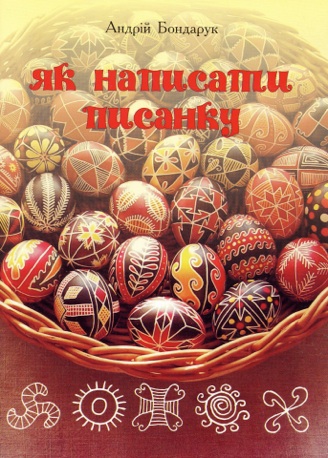
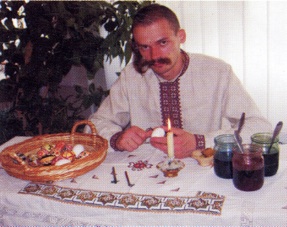
How to Write Pysanky
Author: Андрій Бондарук (Andriy Bondaruk)
Edition: 1st
Format: Paperback booklet
Pages: 20
Language: Ukrainian
Illustrations: Color photos and BW drawings
Publisher: «Терен» (Luts’k, Ukraine, 2008)
Availability: Ukraine/teren.lutsk@gmail.com
Acquired: 2008, L’viv
ISBN: 978-966-8575-71-6
“How to Write Pysanky” is one of a plethora of books that have been published in recent years in Ukraine on various folk art themes. There has been a national resurgence in interest in traditional folkways, with many books now available on such subjects as holiday celebrations and folk customs, embroidery, old-fashioned toys, national folk costumes and pysanky.
Particularly popular–or at least numerous–are small how-to books. Many have been published recently on pysankarstvo. This one, by Andriy Bondaruk, is not only from Volyn (my mother's homeland), but probably the best of the bunch.
Andriy, incongruously1 sporting a full kozak costume in his author photo above, gives concise instructions with good illustrations:
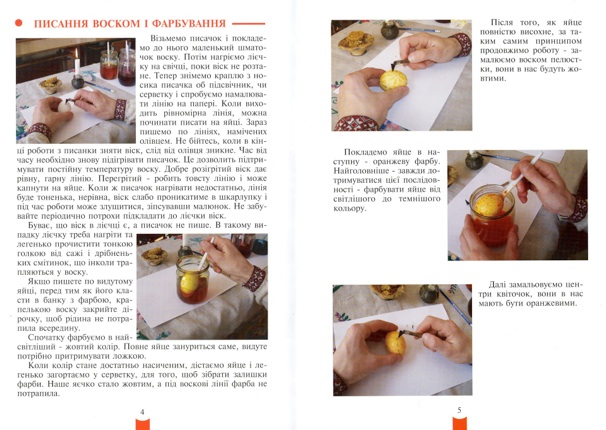
He also discusses the secrets of the pysanka, with a brief discussion of divisions, and a nicely done section on symbolism. He not only has drawings of traditional symbols, but gives examples of traditional pysanky with the symbols:
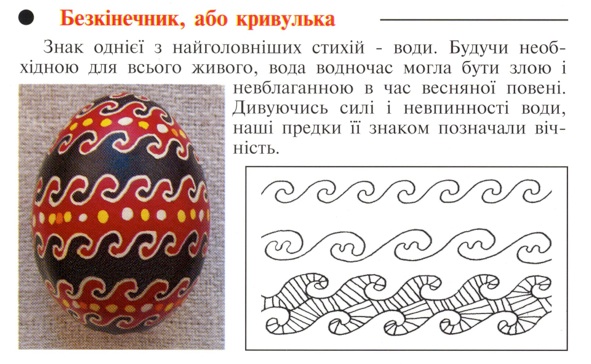
In a section entitled «Прикраси-оберіги» (pysanky-charms) he retells the now well-known tale of Pekun, the chained monster, and explains that Ukrainians would use pysanky as protective charms in their homes and stables to protect themselves and their animals from evil. He gives examples, the simplest being a pysanka–or two–suspended on a string, and more involved charms including the straw bird “flying to the sun” below. He includes instructions for making tassels:
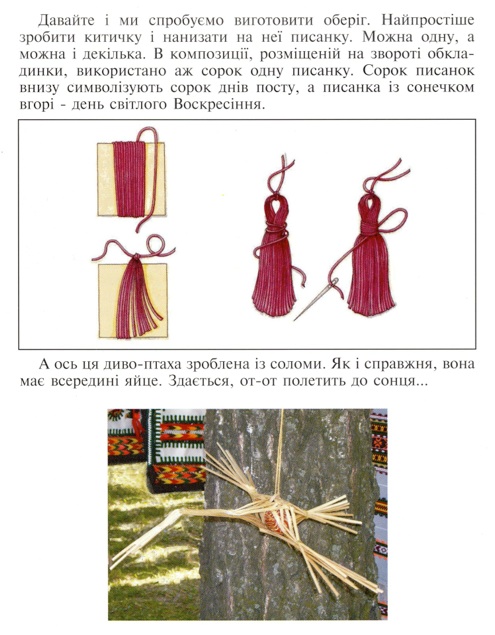
In closing there is a “Word to Parents,” urging to spend time with their children in this happy pursuit, and telling them how to do so carefully.
It is a lovely book written for parents and children, and nicely illustrated throughout.
___________
-
1.The “choob” (hair-style with a shaved head and pony tail) was worn only by men who had become full fledged kozaks, Ukrainian warriors. It is hard to picture them making pysanky, as this was traditionally a woman’s role.
Modern kozaky are much mellower lot, less worried about such strict gender roles. I know several modern-day kozaky, who, while upholding national identity and traditions, seem less concerned with gender-specific roles. Many are actually quite sweet.
Back to MAIN Писанка Books home page.
Back to MAIN Books home page.
Back to Pysanka Bibliography.
Search my site with Google
